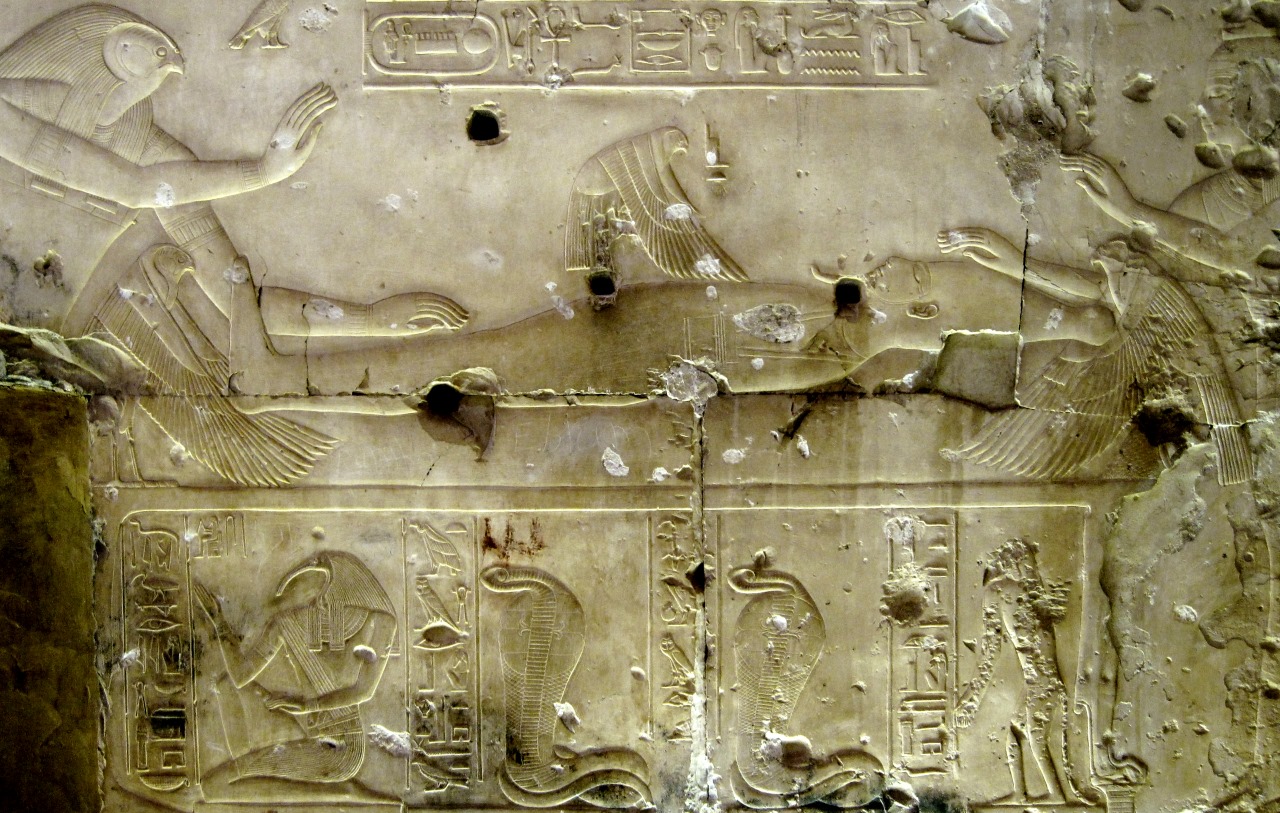Isis and Osiris XIV: The Birth of Horos

(welp my blog has gone from R-rated to X-rated if it hasn't already, sorry)
Something's been bothering me about the Horos myth.
In the Persephone myth, we see that the individual soul lives a blissful existence in Nusa until she "sins" by being tempted by the beautiful narcissus and is forced to live a half-life thereafter; in Hesiod, daimons live on Olumpos until they perjure their oaths to the Stux, being forced into a temporary exile for doing so; in Plotinus, individual souls are eternal and changeless, but temporarily focus their attention away from eternity in inverse proportion to their strength. All of these assume that individual souls pre-exist bodies.
In the Horos myth, though, we have something very different: it is Osiris (consciousness, soul) that falls (in its entirety); Horos doesn't even exist until much later, being born of both Osiris and Isis (matter). This implies that bodies pre-exist individual souls, which is a very different conception of where individual souls come from. Let's see if we can puzzle out what that means, shall we? I think there's four major points we can work from:
It is clear that the gods—Osiris, Set, Isis, and Nephthys—are eternal: when they are said to be born of Geb and Nut, it is speaking of an ontological relationship. But we know that at least the things born of Isis—that is, material things—are mortal and therefore subject to time. I think this is somewhat true of Osiris, too: Empedocles calls the children of Zeus, the daimons, "long-lived" or "immortal," suggesting that they too are subject to time, even if they aren't subject to death. All of this seems to imply that Horos, the individual soul, is of a lower degree than the gods: he isn't eternal but is subject to time, and presumably has a beginning but not an ending.
We also know that Horos is formed from the "essence" of Osiris which Isis magically draws out of his scattered pieces.
We also know that Horos is born premature and lame; he only becomes strong as time goes on.
Finally, we know that while Horos is initially born of Isis and Osiris, the gods eventually strip him of his Isis-part, leaving only the Osiris-part.
These four points seem to suggest to me something like the following:
When a human body is born and is in need of a soul to animate it, it is drawn from some amalgamation of soul-stuff; we might as well call this amalgamation "random," though it is certainly some part of soul that is appropriate to the conditions of the body. Now, this soul-stuff contributes the material of soul, but it is initially unformed or unshaped; by living a human life, the soul is imprinted with some amount of patterning and structure. When the body fails, if the patterning and structure is sufficient to hold the mass of soul together, then a Horos is born; the mass of soul has crystallized into an individual soul. This soul is said to be "born lame" because it initially requires the material body to act as a crutch. On the other hand, if the patterning and structure gained from that first life is insufficient to hold the mass of soul together, then it falls apart and rejoins the pool of unformed soul-stuff from which it came.
Presumably, once the individual soul is born, it can and does go on to animate further bodies and refine its patterning and structure. When this refining has gone on for long enough, it has developed structures or organs of consciousness within it that allow it to exist on its own, without the need for a material body. Once that occurs, then the gods take away Horos's flesh and leave his bones: that is, he exists solely as a construct of consciousness.
If that is all right, it suggests that the teaching presumes that some fraction of people—whatever fraction is presently on their first incarnation—don't have individual souls. I couldn't begin to estimate that fraction, though I imagine it varies by time and place, and it would explain why the myth of Osiris so emphasized the right ordering of society in order to maximize the potential for Horoi to develop (as opposed to, say, ours, which seems to be an attempt to minimize this potential).
It also makes sense of why individual souls are always considered so beautiful and precious: it's because they are precious, being initially very fragile and difficult to bring into being. Of course, all soul-stuff will eventually find its way back to its source, but the rate at which this occurs depends greatly upon how helpful we are to the youngest souls among us (which is to say, presently not at all).
The notion that (some) humans may not have individual souls is not one I have seen in occult philosophy; in fact, the only example that comes to mind is the story of Peer Gynt, where at the end of his life, the Button-Molder insists that Peer is so mediocre that his soul is worthy of neither heaven nor hell and must be melted back down into soul-stuff.
Is any of this likely to be true? I doubt it; it's a model, and "all models are wrong, but some are useful." A better question, then, is what use can we make of such a model?